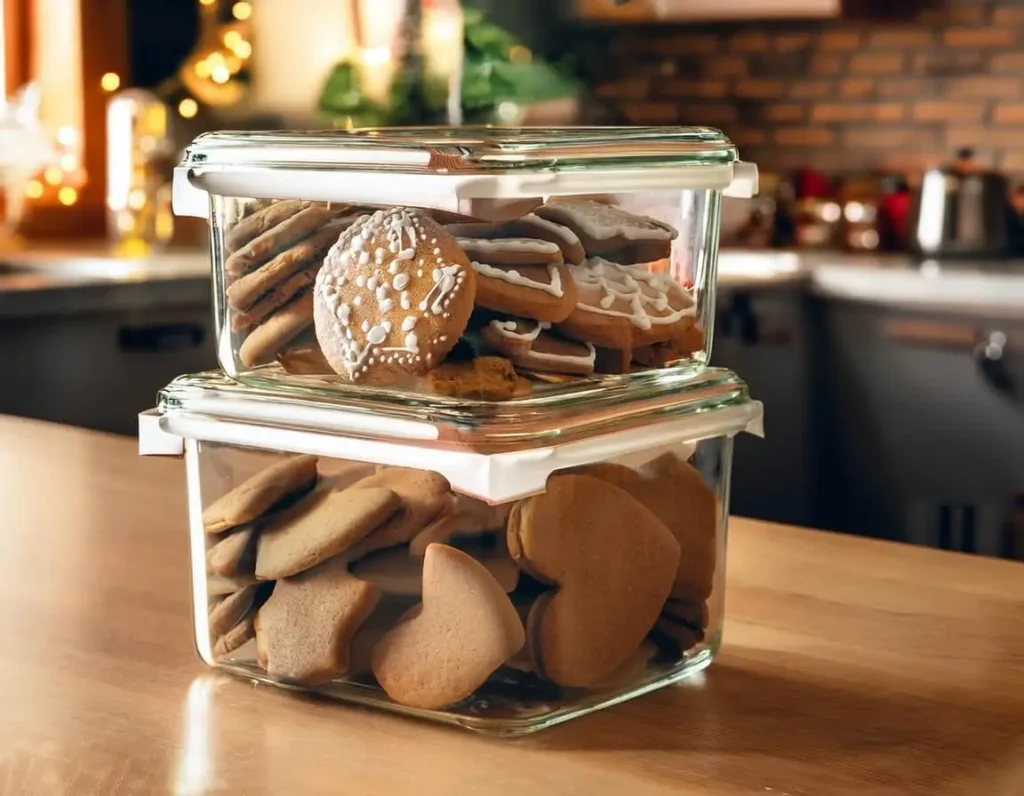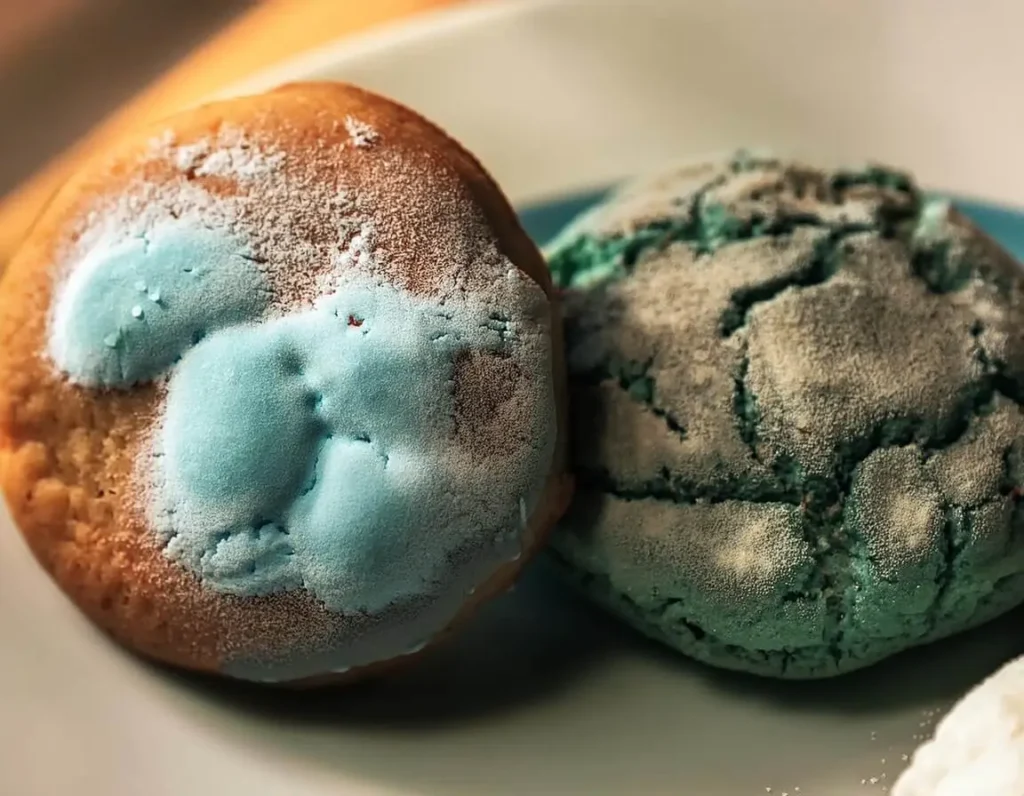Introduction
Gingerbread, with its rich spices and festive aroma, has become a cherished part of holiday traditions worldwide. Whether crafted into intricately decorated houses, rolled into cookies, or enjoyed as dough ready to bake, this treat brings joy to kitchens and celebrations alike. However, many wonder, how long until gingerbread goes bad? Understanding its shelf life is crucial to ensuring safety and preserving its delightful flavors.
From freshly baked cookies to decorative gingerbread houses, the longevity of this holiday staple depends on how it’s prepared and stored. Proper storage techniques not only maintain freshness but also help you avoid the disappointment of spoiled treats. This guide will walk you through the shelf life of gingerbread in its various forms, provide actionable storage tips, and help you identify when your gingerbread may no longer be safe to eat.

Whether you’re baking with family or creating edible masterpieces, knowing how to keep gingerbread fresh ensures every bite is as delicious as intended. Let’s dive into the essentials of preserving this seasonal favorite.
What is Gingerbread?
Gingerbread has a storied history that dates back centuries, tracing its origins to Europe during the Middle Ages. Originally a delicacy flavored with ginger, honey, and exotic spices, gingerbread became a festive favorite thanks to its warm, comforting taste and versatility. Over time, it evolved into the holiday staple we know today, celebrated for its ability to be shaped, baked, and decorated in countless creative ways.

Gingerbread appears in three main forms, each with its unique charm. Freshly baked gingerbread cookies are the most common, loved for their crisp edges and soft, chewy centers. These cookies often serve as a canvas for festive icing and sprinkles, making them a hit for family baking activities. Gingerbread houses, on the other hand, combine culinary art and architecture. Constructed with sturdy gingerbread panels and adorned with colorful candies, they’re often more decorative than edible. Finally, gingerbread dough allows bakers to customize their creations, whether shaping cookies or building houses.
From classic gingerbread recipes passed down through generations to modern variations with unique twists, this treat continues to symbolize the warmth and creativity of the holiday season. Its enduring popularity makes understanding how to preserve it an essential part of holiday preparations.
To learn more about the history of gingerbread traditions, check out this informative article.
How Long Does Gingerbread Last?
3.1 Shelf Life of Gingerbread in Different Forms
The longevity of gingerbread depends on its form and storage conditions. Here’s an overview of how long different types of gingerbread typically last:
- Freshly Baked Gingerbread Cookies
When stored properly at room temperature in an airtight container, gingerbread cookies can last up to 2–3 weeks. If refrigerated, their freshness extends to about 3–4 weeks. Freezing the cookies allows them to remain enjoyable for up to 6 months, but it’s best to thaw them at room temperature before serving. - Gingerbread Dough
Unbaked dough stored in the fridge lasts around 5–7 days, provided it’s tightly wrapped or stored in a sealed container. For longer preservation, freeze the dough for up to 6 months. When ready to use, thaw it in the fridge overnight. - Gingerbread Houses
For decorative purposes, gingerbread houses can last for several weeks if kept in a dry, cool area. However, their edibility diminishes after 2–3 weeks due to exposure to air, which hardens the gingerbread and diminishes its flavor. If you plan to eat parts of the house, it’s best to do so within the first week.
For an easy gingerbread house recipe for beginners, check out this step-by-step guide.
3.2 Factors Affecting Gingerbread Longevity
Several factors influence how long gingerbread remains fresh and safe to eat:
- Ingredients Used
Gingerbread made with fresh ingredients like butter, eggs, or milk tends to have a shorter shelf life compared to recipes with dry or shelf-stable components. Preservatives, when used, can extend the longevity of commercial gingerbread products. - Storage Methods
Proper storage is critical for maintaining freshness. Room temperature storage is suitable for cookies, but airtight containers or resealable bags are essential to prevent moisture exposure. For dough, refrigeration or freezing is the most effective method. Gingerbread houses should be kept away from humidity to avoid softening. - Environmental Conditions
Humidity and temperature play a significant role. High humidity can make gingerbread soft and lead to mold growth, while extreme cold can make it overly hard. Keeping gingerbread in a cool, dry place is the best approach.
Moreover, planning ahead and understanding these factors ensures your gingerbread stays delicious and safe to eat. Additionally, using proper storage techniques can enhance its longevity, giving you more time to enjoy this festive treat.

Signs of Spoilage in Gingerbread
4.1 How to Identify Spoiled Gingerbread
Knowing when gingerbread has gone bad is crucial to avoiding unpleasant surprises. Spoiled gingerbread can exhibit several noticeable signs:
- Mold: The most obvious indicator of spoilage. Mold appears as green, white, or black spots on the surface, especially if the gingerbread was stored in humid conditions.
- Stale Smell: Spoiled gingerbread may emit an unpleasant, sour, or musty odor instead of its characteristic warm, spicy aroma.
- Hard Texture: While gingerbread naturally hardens over time, excessively brittle cookies or dough that crumbles easily may no longer be good to eat. Conversely, gingerbread dough may feel slimy or sticky if it has spoiled.

Visual and Tactile Cues:
- For gingerbread dough, look for discoloration or unusual smells. Fresh dough should be pliable and smell like spices.
- For baked goods, check for changes in texture, such as extreme dryness or an overly tough consistency. A stale flavor often accompanies these changes.
4.2 Is It Safe to Eat Expired Gingerbread?
Consuming expired gingerbread comes with risks. While stale gingerbread might not taste great, it is usually harmless unless mold or bacteria have developed. However, consuming gingerbread with visible signs of spoilage, such as mold or off smells, can lead to digestive discomfort or foodborne illnesses.
Gingerbread Houses:
Many gingerbread houses are designed for decoration and may not be edible after prolonged exposure to air. If stored properly and consumed within a week or two, the house may still be safe to eat. Beyond that, it’s better to admire its decorative charm rather than risk eating expired parts.
When in doubt, it’s safer to discard suspicious gingerbread. Fresh batches are always worth the effort, especially during the holidays.
Learn more about how long gingerbread houses last after making to ensure safety and freshness.
Understanding the dangers of consuming expired foods can help you make informed decisions.
Best Practices for Storing Gingerbread
Proper storage ensures gingerbread retains its flavor and texture, whether in the form of cookies, dough, or decorative houses. Here’s how to store each type for optimal freshness and safety:
5.1 Storing Freshly Baked Gingerbread Cookies
Freshly baked gingerbread cookies can stay delicious for weeks if stored correctly:
- Ideal Storage Containers: Use airtight containers or resealable plastic bags to protect cookies from exposure to air, which causes them to dry out. Separate layers with parchment paper to prevent sticking.
- Storage Conditions: Keep cookies in a cool, dry area, away from direct sunlight and humidity. At room temperature, cookies remain fresh for 2–3 weeks.
- Prolonging Freshness: For longer storage, place cookies in the refrigerator (good for 3–4 weeks) or freeze them. When freezing, use freezer-safe bags or containers, ensuring no air remains inside. Thaw at room temperature to restore their texture and taste.
5.2 Storing Gingerbread Dough
Proper storage of gingerbread dough ensures it’s ready for baking whenever inspiration strikes:
- Refrigerating Dough: Wrap the dough tightly in plastic wrap or store it in an airtight container. It will remain usable for 5–7 days.
- Freezing Dough: Divide the dough into portions and wrap them individually before placing them in a freezer-safe bag. This method allows for easy thawing of smaller quantities. Frozen dough lasts up to 6 months.
- Thawing Frozen Dough: Transfer the dough to the fridge and allow it to thaw overnight. Avoid leaving it out at room temperature, as this can encourage bacterial growth.
For best practices on freezing baked goods, refer to this helpful guide.
5.3 Preserving Gingerbread Houses
Gingerbread houses are as much a festive decoration as they are a treat. Here’s how to keep them in good condition:
- Decorative Preservation: Store the gingerbread house in a cool, dry place. Cover it loosely with plastic wrap to protect it from dust and pests. Avoid humid environments that could soften the gingerbread or cause decorations to melt.
- Edibility Timeline: Gingerbread houses are best consumed within 2–3 weeks of assembly if intended for eating. Over time, exposure to air hardens the gingerbread, making it less appealing and potentially unsafe to consume.
- Extended Decoration Use: If you plan to keep a gingerbread house purely for decoration, consider using non-edible glue or varnish to preserve its structure. However, once treated, it is no longer safe to eat.

By following these storage tips, you can enjoy gingerbread in its many forms for weeks to come, ensuring it remains as delightful as the day it was made.
If you’re wondering how far in advance to make gingerbread houses, this guide offers helpful advice for both decoration and consumption.
Frequently Asked Questions (FAQs)
6.1 How Long Does Gingerbread Stay Good For?
The shelf life of gingerbread depends on its form:
- Cookies: Freshly baked cookies last 2–3 weeks at room temperature in an airtight container, or up to 6 months in the freezer.
- Dough: Refrigerated dough remains good for 5–7 days, while frozen dough lasts up to 6 months.
- Gingerbread Houses: Decorative houses are best consumed within 2–3 weeks, though they can remain as decorations for longer if not meant for eating.
Proper storage in cool, dry conditions can significantly extend the freshness of gingerbread.
6.2 How Long Can a Gingerbread House Sit Out For?
Gingerbread houses can sit out for several weeks if kept in a dry, cool place. However, their edibility diminishes over time:
- For decorative purposes, gingerbread houses can last indefinitely, especially if sealed or varnished.
- For eating, it’s best to consume them within 2–3 weeks, as prolonged exposure to air can harden the gingerbread and make decorations stale or unsafe.
6.3 How Long Do Gingerbread Cookies Last at Room Temperature?
At room temperature, gingerbread cookies stored in an airtight container stay fresh for 2–3 weeks. To maximize their shelf life:
- Keep them away from humidity and heat.
- Use parchment paper to separate layers in the container.
If you need to keep them longer, freezing is a better option.
6.4 Can You Eat Expired Gingerbread in a House?
Eating expired gingerbread from a house is not recommended, especially if it shows signs of spoilage like mold, unusual smells, or hard texture. While stale gingerbread may be safe, consuming visibly spoiled gingerbread can pose health risks. If in doubt, it’s better to discard it and enjoy a fresh batch.
By following these guidelines, you can ensure your gingerbread is both enjoyable and safe to consume.
Conclusion
Gingerbread is a delightful holiday treat that can be enjoyed in many forms, from freshly baked cookies to creative gingerbread houses. However, knowing how long until gingerbread goes bad is crucial to ensure it remains both tasty and safe to consume. Freshly baked cookies can last up to three weeks at room temperature, while dough keeps for several days in the fridge and up to six months in the freezer. Gingerbread houses, depending on their purpose, are best eaten within two to three weeks if intended for consumption.
Proper storage is key to prolonging the freshness of gingerbread. Airtight containers, cool and dry conditions, and careful handling can make all the difference. Recognizing signs of spoilage, such as mold, stale smells, or extreme hardness, ensures you avoid health risks and maintain quality.
By following the storage tips and guidelines shared in this article, you can confidently enjoy gingerbread throughout the holiday season. Whether baking cookies, assembling houses, or crafting festive creations, keeping your gingerbread fresh will maximize its flavor and your enjoyment.
So, embrace the holiday spirit with this versatile treat and savor every bite knowing you’ve stored it safely and wisely.

